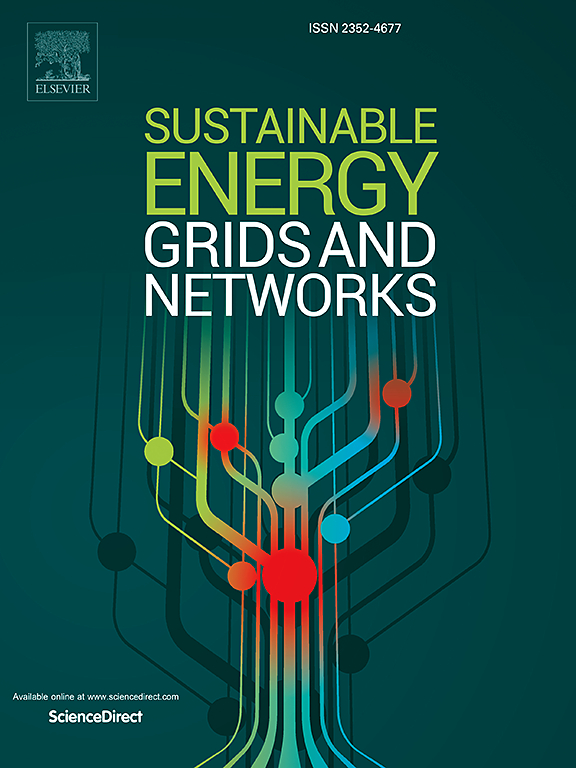考虑电动汽车响应的低碳互补能源系统协同优化策略
IF 5.6
2区 工程技术
Q2 ENERGY & FUELS
引用次数: 0
摘要
综合能源系统是低碳转型的核心载体之一。然而,它面临着三个挑战:负荷管理不善导致需求波动大,多能源协调效率低下限制了灵活的资源利用,统一的碳定价缺乏对不同利益相关者减排的差异化激励机制。针对这些问题,本文提出了一种将电动汽车集群响应与阶梯奖惩碳交易机制相结合的多能互补IES协同优化策略,旨在实现“经济、低碳、稳定”的多目标协同优化。首先,使用预测平均投票(PMV)指标来获得考虑用户舒适度反馈的负载需求。这种方法提高了集成系统的灵活性。然后,提出了一种基于智能代理的电动汽车集群调度策略。目的是为了解决电力负荷可调性差的问题,提高系统的稳定性。最后,建立了考虑电动汽车配额的分步奖惩碳交易机制。该机制优化了各单位的碳排放结构,减少了碳排放,增加了碳交易收益。案例研究表明,该策略能够有效地实现削峰填谷,降低IES碳排放和总运营成本,提高IES性能的有效性。本文章由计算机程序翻译,如有差异,请以英文原文为准。
Coordinated optimization strategy of low-carbon complementary energy system considering electric vehicles response
Integrated Energy System (IES) serves as one of the core carriers for low-carbon transformation. However, it confronts three challenges: poor load management causing large demand fluctuations, inefficient multi-energy coordination limiting flexible resource utilization and uniform carbon pricing lacking mechanisms to differentially incentivize emission reductions across diverse stakeholders. To address these issues, this paper proposes a coordinated optimization strategy for multi-energy complementary IES that integrates electric vehicles (EVs) cluster response with a stepped reward-punishment carbon trading mechanism, aiming to achieve multi-objective collaborative optimization of "economy, low-carbon and stability". First, predictive average voting (PMV) metrics are used to obtain load demands that take into account user comfort feedback. This approach improves the flexibility of the integrated system. Then, an intelligent agent-based EVs cluster scheduling strategy is proposed. The purpose is to solve the problem of poor adjustability of power load and improve the stability of the system. Finally, a step-by-step reward and punishment carbon trading mechanism is established that takes into account the quota of EVs. This mechanism optimizes the carbon emission structure of each unit, reduces carbon emissions, and increases carbon trading income. The case study showed that the proposed strategy can effectively achieve peak clipping and valley filling, reduce IES carbon emissions and total operating costs, and prove its effectiveness in improving IES performance.
求助全文
通过发布文献求助,成功后即可免费获取论文全文。
去求助
来源期刊

Sustainable Energy Grids & Networks
Energy-Energy Engineering and Power Technology
CiteScore
7.90
自引率
13.00%
发文量
206
审稿时长
49 days
期刊介绍:
Sustainable Energy, Grids and Networks (SEGAN)is an international peer-reviewed publication for theoretical and applied research dealing with energy, information grids and power networks, including smart grids from super to micro grid scales. SEGAN welcomes papers describing fundamental advances in mathematical, statistical or computational methods with application to power and energy systems, as well as papers on applications, computation and modeling in the areas of electrical and energy systems with coupled information and communication technologies.
 求助内容:
求助内容: 应助结果提醒方式:
应助结果提醒方式:


